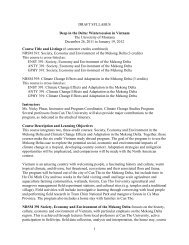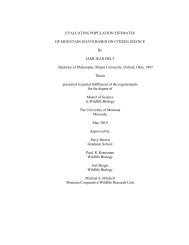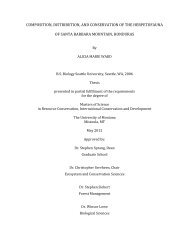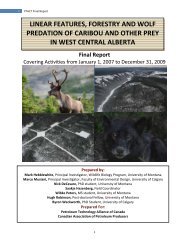Swidden Agriculture: Ancient Systems in Transition Sustaining Food ...
Swidden Agriculture: Ancient Systems in Transition Sustaining Food ...
Swidden Agriculture: Ancient Systems in Transition Sustaining Food ...
You also want an ePaper? Increase the reach of your titles
YUMPU automatically turns print PDFs into web optimized ePapers that Google loves.
Incipient slash and burn farm<strong>in</strong>g<br />
Integral long fallow swidden systems are now largely a memory. Inhabitants of a few remote<br />
areas <strong>in</strong> Amazonia and Southeast Asia may still practice <strong>in</strong>tegral swidden, but elsewhere these<br />
systems have disappeared as a result of cultural change, lack of available land, emerg<strong>in</strong>g market<br />
opportunities, destructive logg<strong>in</strong>g practices, establishment of large plantations, government policies,<br />
and competition with recent migrants who lack the requisite TEKP. Integral swidden practices have<br />
been replaced by what Conkl<strong>in</strong> called <strong>in</strong>cipient shift<strong>in</strong>g cultivators, or what others refer to as slash<br />
and burn.<br />
Incipient slash and burn<br />
farm<strong>in</strong>g is characterized by:<br />
• a lack of knowledge and<br />
experience (TEKP),<br />
• cont<strong>in</strong>uous and/or more<br />
<strong>in</strong>tensive cultivation,<br />
• large clear<strong>in</strong>gs with few/no<br />
trees reta<strong>in</strong>ed,<br />
• no or short fallows, and<br />
• repeated burn<strong>in</strong>g<br />
Incipient slash and burn is<br />
unsusta<strong>in</strong>able, results <strong>in</strong><br />
widespread establishment of<br />
<strong>in</strong>vasive weeds and often<br />
creates a wave or front of<br />
forest conversion.<br />
Belize











